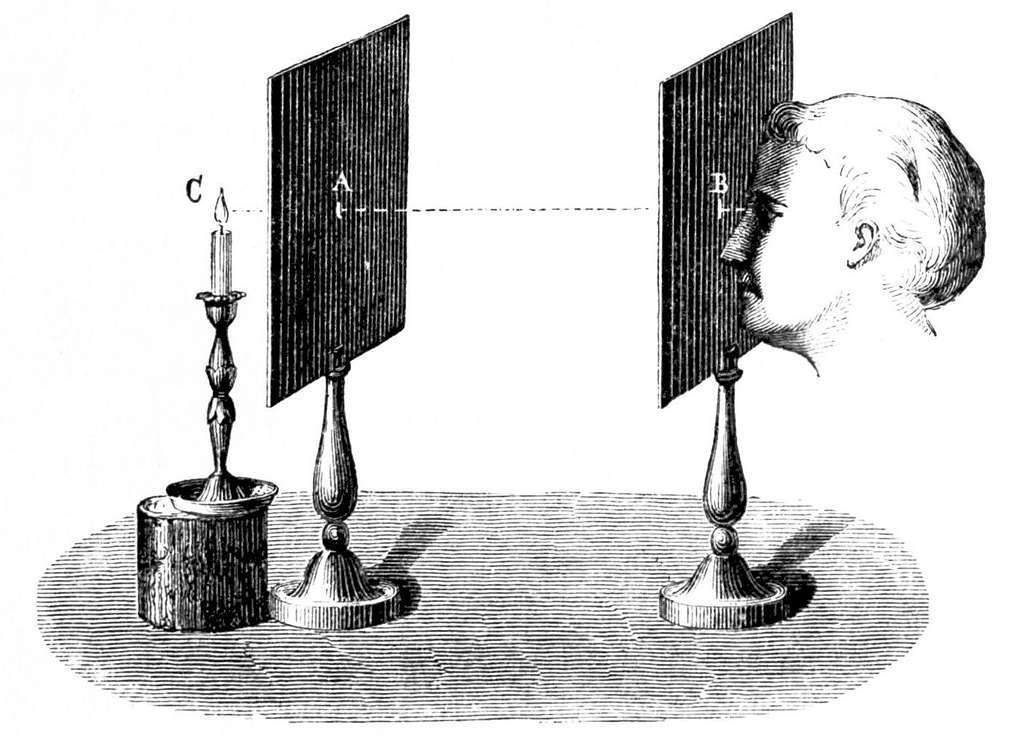Rectilinear Propagation of Light
Introduction
In the realm of physics, the rectilinear propagation of light is a fundamental concept that underpins our understanding of optics. This phenomenon refers to the straight-line path that light takes when it travels through a uniform medium. This explanation will delve into the principles, theories, and equations associated with the rectilinear propagation of light.
The Nature of Light
Light, often referred to as electromagnetic radiation, consists of particles known as photons. Photons are massless and travel at the speed of light in a vacuum, denoted as 'c' with a value of approximately 299,792,458 meters per second. Light can behave both as a wave and a particle, which is described by the wave-particle duality principle.
Straight-Line Propagation
Light as a Ray
When discussing the rectilinear propagation of light, it is common to treat light as a ray. A light ray is an imaginary line that represents the path along which light travels. In a uniform medium, such as air or vacuum, light rays travel in straight lines.
Snell's Law
Snell's Law, also known as the law of refraction, explains how light rays change direction as they pass from one medium to another with different optical densities. It can be expressed as:
`\[n_1 \cdot \sin(\theta_1) = n_2 \cdot \sin(\theta_2)\]`
Where:
- `\(n_1\)` is the refractive index of the initial medium.
- `\(n_2\)` is the refractive index of the second medium.
- `\(\theta_1\)` is the angle of incidence.
- `\(\theta_2\)` is the angle of refraction.
When light passes from a less dense to a denser medium, it bends toward the normal, and when it goes from a denser to a less dense medium, it bends away from the normal.
Rectilinear Propagation in Homogeneous Media
Homogeneous Media Definition
In the context of rectilinear propagation, a homogeneous medium is one in which the refractive index remains constant throughout the medium. Air, in most cases, is considered homogeneous for practical purposes.
Light Speed in Homogeneous Media
The speed of light in a homogeneous medium can be described as:
`\[v = \frac{c}{n}\]`
Where:
- `\(v\)` is the speed of light in the medium.
- `\(c\)` is the speed of light in a vacuum.
- `\(n\)` is the refractive index of the medium.
Fermat's Principle
Fermat's Principle states that light follows the path that takes the least time. This principle helps explain why light follows a straight-line path in a homogeneous medium. When light travels from one point to another in the same medium, the time taken is minimized by taking a straight path.
Applications and Significance
Optics
The rectilinear propagation of light is the foundation of geometric optics, which includes the study of reflection and refraction. This principle is crucial in designing lenses, mirrors, and other optical components.
Vision
Understanding how light travels in a straight line is fundamental in understanding how we see objects. When light from an object enters the eye, it follows a straight path and forms an image on the retina.
Fiber Optics
Fiber optic communication systems rely on the rectilinear propagation of light within optical fibers. The information is transmitted through light signals that traverse these fibers without significant dispersion.
Conclusion
The rectilinear propagation of light is a fundamental concept in physics and optics. Light travels in a straight line in a homogeneous medium, and this behavior is governed by Snell's Law, Fermat's Principle, and the speed of light in that medium. This principle has a wide range of applications in everyday life, from vision and optics to modern communication systems. Understanding how light propagates rectilinearly is essential for anyone seeking to comprehend the behavior of light in various mediums and its applications in science and technology.



